You are here
Trip Tamshaly & Khanga-Baba.
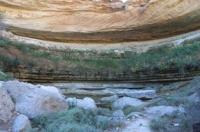
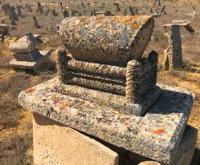
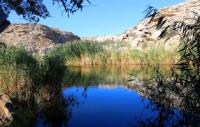
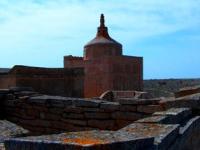
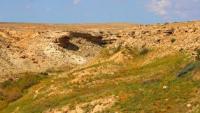
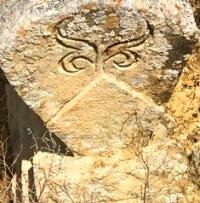
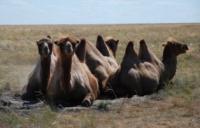
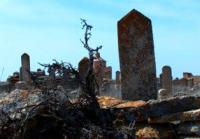
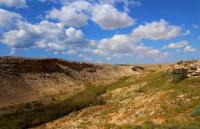

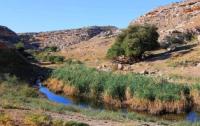
Excursion to Tamshaly valley.
“The world is a book and those who do not travel read only one page”
Augustine of Hippo.
Brief description of route of a sightseeing trip to town of Fort Shevchenko:
Aktau - Saura valley - Fort Shevchenko - Bautino settlement - Tyupkaran cape - Sanazar necropolis - Tamshaly valley - Bisenbai necropolis - Sagandyk necropolis – Khanga-Baba valley - Aktau.
Distance of route: 286 km.
Season: April - October.
Duration: 1 day.
Best time for tour: April, May, June, September.
Detailed program of trip to Zhigylgan Depression and Khanga-Baba valley:
Trip from Aktau to Cape Tyupkaragan.
Transfer: Aktau – valley Saura (92 km). Our path from Aktau is heading north towards Fort Shevchenko, at 84 km of the road we turn left and along the steppe road we go to the shore of the Caspian Sea. From here to the tract Saura 8 kilometers.
On a geographical latitude from the place of the Saura tract further to the north begins the Tyupkaragan Peninsula. The Saura valley is located on the western coast of the Caspian Sea. One of the attractions of the tract is a small fresh lake Saura in which endemic turtles are found, if we are lucky, we can see them.
On the descent into the tract on the right side is a canyon similar to the Tamshaly canyon. The sea coast is covered with silky sand, the bottom is sea, sandy, perfectly smooth, there are many huge and beautiful shells. In the clear waters of the Caspian Sea there are crayfish, shrimp - lovers of clean beaches.
We pass an abandoned village, which consists of the ruins of old houses, a former fishing village. At the top of the Saura tract there is a small necropolis, consisting mainly of tombstones of the saganatams (local tombstones). Walking in the environs.
Transfer: valley Saura - the town of Fort Shevchenko (62 km). Arrival in the town of Fort Shevchenko, visiting the town museum of Taras Shevchenko. The museum complex was opened in 1932 and is located on the territory of the former garden of the Novopetrovsky fortification in the summer residence of the commandant of the fortress Irakli Uskov.
The first director of the museum was Satangul Tajiev. A visit to the well, where there was a wooden blockhouse under a gable roof, was dug by Taras Shevchenko and his friends in the 1850s with a depth of more than 7 meters. Nearby is a “chigir” (device for delivering water from a well) - a wheel with ladles through which water poured into a container.
People call it the "Shevchenko well." According to legend, it was at this place that Taras Shevchenko and his fellow soldiers, digging a well, got to fresh water. A visit to the poet’s dugout, the dugout was built by commandant Uskov, the commandant’s wife provided this refuge from the heat to the poet.
Visit to the monument to Taras Shevchenko. In the halls of the museum are drawings from the Karatau expedition, in which Taras Shevchenko participated, a model of the Novopetrovsky fortification. Inspection of the knight's cross in the museum.
Visit to the Museum of the History of Fisheries and Ethnography of Mangyshlak. The museum presents the life of the Mangyshlak nomads, there are three halls here - the history of the development of fishing in the Caspian Sea, the history of the region and ethnography.
Visiting the museum Muryn Zhyrau (1859 - 1954) a famous professional storyteller and singer. Muryn Sengirbayuly organized a blacksmith workshop in Fort Shevchenko. A museum was opened in the master’s house. In one of the rooms his blacksmith's working tools were collected - bellows, from which a fire was blown that melted metal, and many different jugs, irons made by the hands of the blacksmith Muryn. Muryn Sengirbayuly was famous as a chaser.
The bulk of his jewelry is stored in the State Museum of the First President in Astana. In the second room of the museum Muryn-zhyrau collected things that belonged to Muryn. The room is decorated with a portrait depicting Muryn Sengirbayuly with his wife Karashash and daughter Turlan. His “Song about forty Crimean heroes” is popular among the people of Kazakhstan.
A visit to the town park named after T. G. Shevchenko. In the park there is an anti-aircraft gun, a monument to Taras Shevchenko, the Freedom pedestal "Senior officers of the Mangyshlak expeditionary detachment, who participated in the Khiva campaign of 1873."
Visit to the Austrian stele located in the vicinity of the town of Fort Shevchenko. It spire-shaped stele, which is located on the eastern side of the soldier (military) cemetery. The stele was established in memory of Austrian prisoners of war of the 1st World War. On the stele there is an inscription dedication in German: “East. The soldiers of 1915. From your friends.”
Visit to the house of Idris Serikbayev. This is a four-room house that belonged to the local builder - craftsman, Idris Serikbaev, the author of interesting architectural building structures of the city of Fort Shevchenko. The building is replete with decorative details.
Door and window openings are decorated with round columns connected by arches. Above column are spherical knob. Column decorated with contour deep carvings. The cornice plate is decorated with curly elements processed in a profile cut.
A visit to the building of the Russian-Kazakh school, built in 1909 by order of the Ministry of Education of Russia from the local stone shell rock in the Gothic style. It was a county school with two years of study. This school was attended mainly by the children of officers, local Russian landowners, as well as several children of the bais.
A visit to the monument on Kurgantash Hill is a memorial to the victims of political repression. The monument was erected in 1996, it is one of the first memorials erected in Kazakhstan.
Visit to the building of the first radio station in the Alexander fortification. A radio station for communication and telegraphy was delivered here in 1909. The Fort Shevchenko radio station is the first radio station built before 1917 on the territory of Kazakhstan by the Russian Post and Telegraph Office. It was a trihedral mast antenna 36 meters high. At on August 1912, the radio station was already operating. The spark transmitter provided stable communications within a radius of 300 kilometers.
Transfer: Fort Shevchenko - Bautino village (5 km). In the village of Bautino, visiting historical sites - a monument to Alexei Bautin, old houses, an obelisk of the expedition of Alibi Dzhangeldin. The inscription on the obelisk: "Here, on August 23, 1918, the international detachment of Dzhangeldin landed." This obelisk was installed in the village in 1975. In the village of Bautino are the ruins of the St. Nicholas Church, the lighthouses of the 1850s, the old Bautino port.
Transfer: Bautino village - Cape Tyupkaragan (21 km). On the way, if you wish, you can visit the ruins of the famous Dubski Garden. In 1884, the owner of the garden was the well-known fishery owner Zakhar Dubsky in the eastern Caspian. A large house with a veranda was built there, berry bushes, grapes, fruit trees were planted, a pool was arranged. Vegetables were also grown. Land for the garden was imported from Astrakhan. The gardener was a Kazakh named Uraz.
Arrival at Cape Tyubkaragan. In Soviet times, there was a fish cannery in the vicinity of the cape; below on the seashore are the ruins of the former general's dacha. From the cape, which dominates the cliff, a magnificent panorama of the Caspian Sea and the steep coast of the cape opens.
Transfer: cape Tyupkaragan - necropolis of Sanazar-ata (21 km). Visit to the necropolis of Sanazar-ata. The ancestral necropolis of Sanazar-ata is located on a hill in which burials of the XVII - XX centuries are located. At the entrance to the necropolis is an old mosque, which is a fence of stone slabs with a stone mound that crowns a pole. This is the grave of St. Sanazar-ata.
Transfer: Sanazar-ata necropolis - a panoramic platform to Cape Karakuduk (1 km). The panoramic platform, which is located on the edge of the chink, offers a picturesque view of the northern coast of the Tupkaragan Peninsula. Short walk around.
Transfer: Cape Karakuduk - Karagan Descent - Tamshaly valley (15 km). On the way to the Tamshaly valley, we pass Karagan Descent, which offers a wonderful view of Cape Bagarzhik and its surroundings. Below you can see the ruins of the old village of fishermen Kanga.
Arrival in the Tamshaly valley in translation from Kazakh "Merry drops". Here is an oasis with a Tamshaly small lake, weeping and old willows, poplars, shrubs. Water protrudes from under a wide stone platform overhanging a high cornice. The air here is saturated with water vapor, a small stream flows from the lake.
Transfer: Tamsaly valley - Bisenbay necropolis (18 km). We climb the cliff and our path goes south to the Bisenbay necropolis. Arrival to the necropolis, a walk in the vicinity. The Bisenbai Necropolis dates from the XVIIth - XXth centuries, located on a hill 4 kilometers north of the Sagyndyk Necropolis. The Bisenbai Necropolis consists of two mausoleums, several saganatams (local tombstones), built from limestone slabs.
Transfer: Bisenbay necropolis - Sagandyk necropolis (4 km). Arrival at the necropolis, inspection of the necropolis and mausoleums.
Transfer: Sagandyk necropolis - Khanga-Baba valley (5 km). Arrival to the necropolis, inspection of the necropolis, the mausoleum, a walk in the vicinity of the valley, a visit to the Khanga-Baba well. The Khanga-Baba valley is located on the highway of the ancient caravan road to Khorezm.
This is an open air museum. Spring water, thickets of hawthorn, blackberry, mulberry, elm, poplar. Here is the ancient necropolis of Khanga-Baba with a mosque and mausoleum of Khanga-Baba. Taras Shevchenko visited this place in the XIXth century as part of the Karatau expedition and called it the number one miracle in Mangyshlak.
Transfer: tract Khanga-Baba - Aktau (64 km). Arrival in Aktau, the end of the tour.
Note:
Author program of Alexander Petrov. Copying and introduction - from the sanction of the author petrovsra@mail.ru
Photos by
Alexander Petrov.







